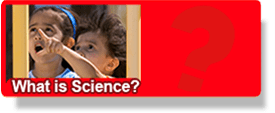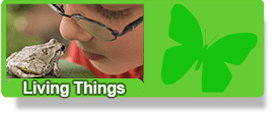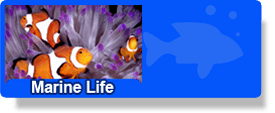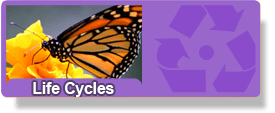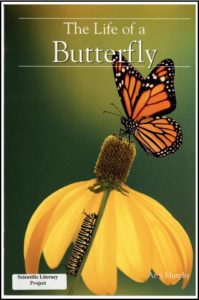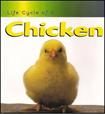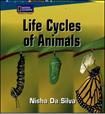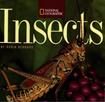Life Cycles
In the final SLP unit, “Life Cycles,” children explore the life cycles of various living things. They watch eggs hatch in an incubator, observe the life cycle of a frog, and watch caterpillars turn into butterflies. Children make observations and record them in their science notebooks. Children revisit many concepts discussed in previous units, such as the difference between living and non-living things and how animals’ bodies enable them to function and survive.
"Life Cycles" Books
Isn’t It Strange?
Isn’t It Strange? Author: Nancy Polette
Publisher: Kaeden Books
Contact: 1-800-890-7323
Web: www.kaeden.com
ISBN: 9781578740772
“Isn’t It Strange?” shows children that living things change throughout their life cycles. Through detailed photographs of organisms in their natural environment, children can begin to understand that growth involves change.
The Life of a Butterfly
The Life of a Butterfly Author: Ann Murphy
Publisher: Abrams Learning Trends
Contact: 1-800-227-9120
Web: www.abramslearningtrends.com
ISBN: 9780766415140 (6-pack)
“The Life of a Butterfly” provides details of the life cycle of the butterfly. Children are introduced to the idea that change is part of a life cycle. Through clear and detailed photographs, children can trace each stage in a butterfly’s life cycle.
The Penguin Chick
The Penguin Chick Author: Marilyn Woolley
Publisher: National Geographic School Publishing, 2001
Contact: 1-888-915-3276
Web: http://ngsp.com
ISBN: 07922-87126
“The Penguin Chick” introduces the life cycle of a penguin. Children learn about a penguin’s habitat and about how adult penguins care for their young. The book also shows that for some animal species, parents work together to raise their young and provide food and shelter for their offspring.
The Life Cycle of a Frog
The Life Cycle of a Frog Author: Angela Royston
Publisher: Heinemann-Raintree
Contact: 1-888-844-5329
Web: www.heinemannclassroom.com
ISBN: 1432925369
“The Life Cycle of a Frog” introduces children to the development of the frog from an egg to an adult frog. Children learn about frog habitats and their need for water. Detailed photographs allow children to trace the life cycle of a frog from spawn to tadpole to froglet to adult frog. A frog’s changing body structures are discussed along with their functions.
The Life Cycle of a Chicken
The Life Cycle of a Chicken Author: Angela Royston
Publisher: Heinemann-Raintree
Contact: 1-888-844-5329
Web: www.heinemannclassroom.com
ISBN: 1432925407
“The Life Cycle of a Chicken” introduces children to the development of a chicken from an egg to an adult chicken. Children learn that hens watch over their chicks and protect them. Children also learn the importance of the male chickens—or cockerels—in the life cycle both for mating and for providing protection for the hens, the chicks, and the eggs.
Life Cycles of Animals
Life Cycles of Animals Author: Nisha Da Silva
Publisher: National Geographic School Publishing, 2001
Contact: 1-888-915-3276
Web: http://ngsp.com
ISBN: 978-14263-50603
“Life Cycles of Animals” introduces the idea that different types of animals grow and change in different ways. For a diverse group of animals, the book illustrates that life cycles involve the processes of birth, growth, maturation, and reproduction. Children will also learn that some animals undergo metamorphosis as part of their lifecycle. The book also shows children that animals are classified based on similarities across specific characteristics.
Looking for Symmetry
Looking for Symmetry Author: Gabrielle Slevin
Publisher: National Geographic School Publishing, 2001
Contact: 1-888-915-3276
Web: http://ngsp.com
ISBN: X01-07922-46322
“Looking for Symmetry” introduces children to the concept of symmetry. By examining similarities among the structures of organisms, children can understand this fundamental concept. Through clear and detailed photographs of living things in their natural environments, children can easily see where the line of symmetry is and how the two sides of specific organisms match.
Insects
Insects Author: Robin Bernard
Publisher: National Geographic School Publishing, 2001
Contact: 1-888-915-3276
Web: http://ngsp.com
ISBN: 07922-94319
“Insects” teaches children about insect structures and their function. Children learn that insects are unique among animals because they alone have six legs. Insects are also likely to have three body segments, wings, and feelers on their heads, and to hatch from eggs. Children will see an insect that tastes with its feet (a housefly) and one that hears through holes near its knees (a katydid). They will learn that some insects eat by sipping (butterflies), whereas others chew (grasshoppers), suck (mosquitoes), or soak up (houseflies) their meals. Clear, close-up photographs make the identification of insect structures easy to see.

